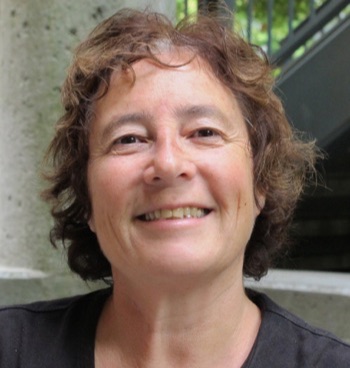Scientists from racial and ethnic minority populations, already underrepresented in the fields of science, technology, engineering and mathematics (STEM), are likely to have relatively fewer speaking opportunities at scientific conferences, according to the results of a new study.
In a new commentary entitled "Women from some under-represented minorities are given too few talks at world’s largest Earth-science conference" that appears in the Dec. 4 edition of Nature, researchers describe their evaluation—the first of its kind—of speaking opportunities for ethnic and racial minorities at scientific conferences. Margarita Azmitia, professor of psychology at UC Santa Cruz, is a coauthor of the commentary, with Heather Ford of Queen Mary University of London; Cameron Brick of University of Cambridge; Karine Blaufuss of the American Geophysical Union (AGU); and Petra Dekens, of San Francisco State University. Both Ford and Dekens earned their Ph.D.s in ocean sciences at UC Santa Cruz.
The research also provides data on intersectionality, where more than one form of bias may be found: women of color, specifically, were given fewer opportunities. The analysis is similar to the problem of gender bias in science, which has been identified as an important root of the underrepresentation of women in STEM.
"These biases and stereotypes also occur in STEM classes in high school and college, and they contribute to the migration of underrepresented students to non-STEM majors and professions where they feel more accepted, competent, and validated," said Azmitia, who studies the college experiences of underrepresented students.
Previous studies have found women and minorities are disadvantaged in hiring or promotion decisions, awarding of grants, invitations to conferences, nominations for awards, forming professional collaborations, and serving as peer reviewers for scholarly publications.
The research focused on the annual conference of the American Geophysical Union (AGU), an international non-profit scientific association with approximately 60,000 members in 137 countries. The study examined data collected from presentation abstracts submitted to the AGU Fall Meeting, the world’s largest Earth and space science conference, between 2014 to 2017, combined with AGU member data concealing their identities.
The analysis showed that while female scientists as a whole had equal or more opportunities to speak at the Fall Meeting, women from ethnic minorities were invited to give fewer talks, invited to give talks less often, and opted for poster presentations more than researchers who were not from underrepresented minorities.
Azmitia noted that “double blind peer review" of conference presentations, scholarly publications, and grants is essential to increase inclusion and equity at AGU and professional outlets in other disciplines. "When reviewers—often senior white males—know the identity and rank of the authors of submissions, implicit biases influence their decisions and maintain the underrepresentation of women and minorities in the academy,” she said.
“These results show that conferences, and really the entire STEM community, need to be more proactive about creating an inclusive environment for under-represented minority groups," said Ford. "There are tangible steps the community can take to support these scientists.”
About the methodology
Abstracts are submitted to topical sessions. Sessions are proposed and organized—and abstracts vetted—by a group of conveners that includes academics, industry members, and government scientists. The primary convener must be an AGU member. In addition to receiving invitations to present in a session, scientists can also submit abstracts for poster and oral presentations.
The AGU has been aware of the need to increase diversity of speakers at its meetings and has taken steps in recent years to address the issue, according to the organization. For example, prior to the 2019 Fall Meeting, being held this week in San Francisco, AGU President Robin Bell and AGU Fall Meeting Chair Denis-Didier Rousseau wrote a letter to all session conveners encouraging them to include diverse and early-career scientists among their co-conveners and session chairs, and to have diverse and young researchers play active roles as oral presenters in their sessions.
While the AGU has been actively working to increase diversity at its meetings, the organization participated in the new study to better understand the issue, said Brooks Hanson, AGU’s executive vice president of science. The results of the new study highlight the need for scientific societies to continue to make additional efforts to combat bias, he said.
“Data from our Fall Meetings show AGU is on the right track in our efforts to incorporate more diverse ethnic and gender voices among our cadre of co-conveners and sessions presenters, and we are continuing our efforts to increase diversity at all AGU meetings,” Hanson said. “AGU wants to ensure all meeting participants feel safe, welcomed, and included, and that our meetings promote and help reflect diversity, inclusion and excellence in science.”



